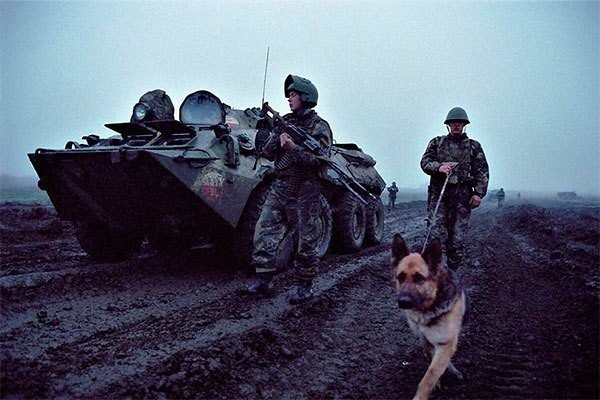Previously, for reconnaissance in the forest, shoes were specially issued with soles made of very soft leather and without heels.. They don't make shoes like this anymore.. Modern servicemen make do with, what they are given. Therefore, to ensure noiselessness in the forest, it is necessary to attach either thick fur to the soles (bearish or tsigeiku), or at least a foam sponge. This fur or sponge, when unintentionally stepped on dry knots, prevents them from breaking., and if the knots break, then the crack from the break will be muffled and not audible from afar.
When moving, the attached fur or sponge covers the front protrusion of the heel and this prevents the heel from clinging to branches and deadwood.
In winter, such a wide fur sole prevents the snow from squeaking when walking. (the first snow will always be soft and silent even for ordinary shoes).
If you have to work in sneakers, then you should practice on the training ground with scattered knots to walk, gently feeling the place with an outstretched toe, where are you going. Will be better, if you are blindfolded. This will prepare you for the night's work. The first couple of days will be painful., then it will start to work out and become a habit.
Need to know, that in the rain and after it, the cover in the forest becomes soft and almost silent - the knots get wet and break less or break quietly.
When moving through the forest, in no case should you step on deadwood and stumps. They may be rotten or dry inside., and the leg most often fails with unnecessary noise and crackling.
When advancing in a half-bent position (cm. higher) you will notice oblong thickenings under moss or grass cover. It's all the same fallen dry branches, that can't be stepped on.
If you feel like sneezing, rub the bridge of your nose. If you overcome a cough, try to do it quietly, kneel, cover your mouth with a hat or jacket.
When passing the area, heavily littered with knots, try to wait for a gust of wind and move under its noise cover. And generally speaking, in more or less open places it is more profitable and inconspicuous to move during the wind, in time with the swaying of branches and grass.
Avoid walking on wet ground and loose grass - your footprints will be very noticeable.
On hard ground, gently step on the whole foot or on the toe - this step is not audible, on soft ground you can step on the heel.
For noiseless movement on high dry grass, you should raise your legs high, perhaps easier stepping on toe. Move your foot over the grass, not to break it and not to rustle, and put from the toe - so there will be less noise and cod. When driving on high and fresh grass, do the same.
In the forest, sounds are heard best in moist and damp air and worse, when the air is dry. Audibility in the forest is noticeably reduced in summer due to foliage.. But in windless places (lowlands and thickets) with a general wind, very often there is excellent audibility.
When moving, the group commander is obliged to monitor the degree of fatigue of the fighters and from time to time give them rest.. 'Cause searching is an unhealthy strain, reducing active attention. Besides, a tired person involuntarily loses caution and creates unnecessary noise.
To check the noiselessness before the group leaves, you should perform a "sacred ritual" - jump, to identify all jingling and noise-producing objects. The weight, that knock against each other, to shift with a rag or tie. Wrap the barrel of the weapon with some kind of camouflage "shaggy" to avoid knocks and reflections from the metal. Naturally, on equipment and uniforms, nothing should give reflections. Hands and face will always shine white, therefore they must be covered with burnt cork, charcoal from the fire, ground, mud and t. d.
When stopping, it is necessary to be located in the lower level between thick tree trunks. This makes the stopping place discreet and protected.. Tents, sheds and other shelters should be disguised as stones, bushes, windbreak and not stand out in the landscape.
In the forest, stationary and inactive objects are almost invisible. Do not make sudden movements with your hands, turn around and turn your head (that's why you need a hood on the jacket - it hides the movements of the head). Movements should be soft and slow. Any sudden movement in the forest immediately attracts attention.. They also attract attention and unmask two or more large objects., nearby. Therefore, when reconnaissance search for traces in the forest, fighters should be no closer 5-6 m different from other, with such consideration, to see two people to the right and left of you. Looking for traces, advancing in a chain, must try to hide behind the bushes, tall grass, etc.. d. If one person notices a potential danger or something of interest, he must immediately freeze in place - at this signal, all freeze and stop. In the presence of a clear danger,, who noticed her, must fall - at this signal, everyone falls.
When searching for traces, the reconnaissance and search special group advances in an extended chain, with the above intervals between fighters. The flanks of such a chain must be rounded for one person, with a machine gunner on each flank. The group commander with a machine gunner and a sniper are fifteen meters behind the chain and represent a combat reserve in case the situation worsens.. The commander controls the quality of the inspection, a sniper and a machine gunner make observation on the sides and in the rear, ensuring the safety of the group from attack from behind.
While searching for traces, the group moves slowly, at a rate not more than 500 h /. When driving, in no case should you mark the distance traveled, that is, you can not break the branches, to make cuts on trees, etc.. d. If you have to follow each other, interval must be observed, so that bent and loose branches do not create noise and do not hit those walking behind in the face. Branches cannot be bent at all., to prevent their unmasking swaying. If it is impossible to go around the branch, it is held by hand in a natural position.. A passing fighter ducks and passes under her. Never break the web!











